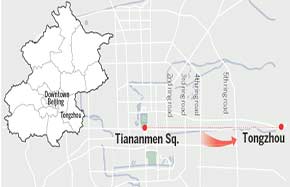Ancient salt well unearthed in north China
SHIJIAZHUANG - A salt well, believed to have been built during the Tang Dynasty, has been discovered by archeologists in North China's Hebei province.
The salt well is the first to be discovered in a northern coastal area and the excavation is part of an ongoing project in Huanghua, a small city on the Bohai Sea coast.
The well, which is 2.5 meters in diameter, is made of distinctive grooved bricks, which over time have come into contact with cinders and ash making them black. Pieces of wooden and woven items were also found at the bottom of the well.
Archeologists believe that the well was constructed at a saltwater-rich offshore site, and the water was used in the production of salt.
Other ruins have been discovered nearby including brine ditches, salt pans, brine pits, fire pits, and stoves, but their functions remain to be confirmed.
This is the first Tang-era salt well to be found in north China, said Wang Qing, a professor at the School of History and Culture under Shandong University.
The ruins are evidence of advanced salt production featuring clear processing procedures, said Wang.
The findings have been welcomed by researchers focusing on ancient salt-making techniques as well as those interested in Tang socioeconomic development, Wang added.
The dig was led by Hebei Provincial Institute of Cultural Relics and Huanghua Museum. The 1,500-square-meter site is less than three kilometers from Haifeng Town ruins, a protected site thought to be the northern tip of the ancient Maritime Silk Road.



















